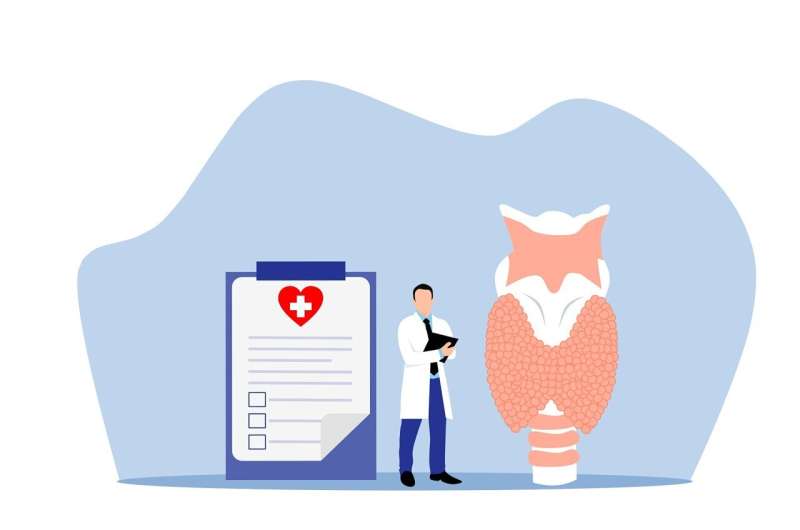Understanding Thyroid Cancer: Risks, Symptoms, and Treatment Options

Learn about the risks, symptoms, and treatment options for thyroid cancer. Early detection and personalized care are key to effective management of this common but often silent disease.
Understanding Thyroid Cancer: Risks, Symptoms, and Treatment Options
The thyroid gland, although small in size, plays a vital role in maintaining your body's overall health. Located at the base of the neck in a butterfly shape, it produces hormones that regulate your metabolism, acting like an engine throttle that controls how your body functions.
How Thyroid Function Affects Your Body
When your thyroid operates normally, it helps regulate vital processes such as energy production, temperature control, and overall metabolic rate. However, if the thyroid malfunctions, symptoms may include fatigue, weight fluctuations, hair loss, or digestive issues. Notably, thyroid cancer often doesn't interfere with hormone production, meaning the gland continues functioning typically even as tumors develop.
Detecting Thyroid Cancer
Most cases are discovered through physical examinations when a lump or growth appears in the neck. In some instances, thyroid tumors are found incidentally via imaging tests like ultrasounds or CT scans performed for other medical reasons. Unlike many other cancers, thyroid cancer typically doesn't cause symptoms until it is advanced, with larger tumors potentially leading to difficulty swallowing, breathing, or voice changes.
Recognizing Symptoms
While many thyroid cancers are asymptomatic, warning signs include:
- A noticeable lump or swelling in the neck
- Asymmetry in neck size
- Feeling of fullness or tightness at the neck base
- Difficulty swallowing or sensation of food getting stuck
- Breathing difficulties, especially when moving the arms
- Persistent hoarseness or voice changes
- Coughing up blood in severe cases
Assessing Your Risk
Thyroid cancer accounts for about 3% of adult cancers, affecting men and women fairly evenly across different regions. An increase in diagnosis over the past decades stems partly from improved imaging technology that detects smaller, slow-growing tumors early. Interestingly, autopsies show many individuals harbor undetected thyroid cancers that never caused symptoms or problems during their lifetime.
Diagnostic and Treatment Methods
Modern diagnostic tools, such as ultrasound and fine needle biopsies, allow for precise assessment of thyroid nodules. Genetic testing of cancer cells further helps predict how aggressive a tumor might be. Treatment generally involves surgical removal of all or part of the thyroid gland. Additional options include:
- Radioactive iodine therapy to destroy residual cancer cells post-surgery
- Thyroid hormone suppression therapy to slow tumor growth
- Active surveillance involving periodic monitoring for small, slow-growing tumors
- Advanced treatments like radiation therapy or targeted systemic therapies for recurrent or difficult cases
Not all nodules require immediate removal; decisions depend on factors like size, appearance, genetic markers, patient health, and personal concerns. Some slow-growing cancers can be carefully monitored, while others warrant prompt surgical intervention.
Final Thoughts
Awareness of the signs and risk factors associated with thyroid cancer is crucial. Early detection and personalized treatment can significantly improve outcomes, making regular check-ups and consultations with healthcare professionals essential for those at risk or experiencing symptoms.
For more detailed information, visit source.
Stay Updated with Mia's Feed
Get the latest health & wellness insights delivered straight to your inbox.
Related Articles
Harnessing Digital Technology to Revolutionize Pediatric Nursing
Explore how digital technology, including AI, wearable sensors, and virtual tools, is transforming pediatric nursing by enhancing safety, personalization, and overall patient experience.
Global Research Identifies Genetic Risk Factors for Alzheimer's Across Diverse Populations
A pioneering international study uncovers diverse and shared genetic risk factors for Alzheimer's disease worldwide, advancing personalized medicine and health equity.
Many Medicare Beneficiaries Face Higher Out-of-Pocket Drug Costs Under New Legislation
New analysis reveals that while the Inflation Reduction Act aims to lower drug costs, most Medicare beneficiaries may face higher out-of-pocket expenses due to plan restructuring and increased deductibles. Learn how recent changes impact drug affordability for seniors.



